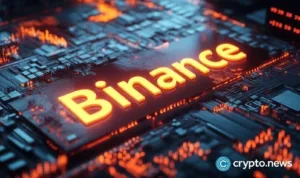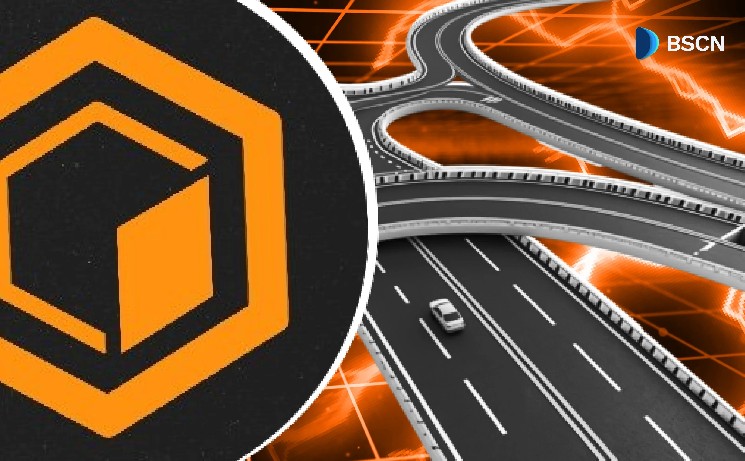Core DAO, a leading decentralized platform in the cryptocurrency space, has unveiled its ambitious roadmap for the second half of 2025 (2H 2025). The plan, detailed in a recent X post on June 26, 2025, outlines significant updates aimed at enhancing Bitcoin integration with Decentralized Finance (DeFi) and improving user experience.
With features like Liquid Staked Bitcoin (lstBTC), CoreFi Strategy, and dual staking upgrades, Core DAO is positioning itself as a key player in the evolving BTCfi ecosystem. Let us explore the roadmap’s key components and their potential impact.
What’s in Store for Core DAO in 2H 2025?
The roadmap, shared via an image on Core DAO’s official X account, highlights six major initiatives set to roll out over the next six months. These updates are designed to strengthen Core’s position as a blockchain that bridges Bitcoin’s security with Ethereum-like smart contract functionality.
Source
lstBTC Launch: Liquid Staking for Bitcoin Holders
One of the standout features is the launch of lstBTC, or Liquid Staked Bitcoin. This initiative allows Bitcoin holders to stake their assets and earn rewards while retaining liquidity, a feature detailed in Core DAO’s blog post on lstBTC.
“With lstBTC, institutions can finally earn BTC-denominated yield without giving up security, liquidity, or their existing custody arrangements,” the blog read.
The transition from coreBTC, the original bridged Bitcoin asset, to lstBTC signals a significant evolution in Core’s BTCfi offerings. lstBTC is expected to attract Bitcoin enthusiasts looking to participate in DeFi without locking up their funds. The feature builds on the Fusion Upgrade, which enhances Core’s ability to handle trust-minimized Bitcoin bridging.
CoreFi Strategy Launch: A New Approach to Bitcoin Yields
Core DAO is also set to launch the CoreFi Strategy, an initiative by CoreFi Strategy Corp, a subsidiary of DeFi Technologies. This approach mirrors the Bitcoin accumulation tactics of companies like MicroStrategy. It involves dual staking of CORE and Bitcoin tokens, aiming to deliver higher returns for investors.
“CoreFi Strategy is designed to replicate investment strategies seen in firms such as MicroStrategy and MetaPlanet. It will focus on accumulating BTC and CORE, the native asset of the Core blockchain. By leveraging financial strategies, CoreFi aims to build its treasury while offering investors regulated access to Bitcoin staking and yield generation opportunities,” CoreDAO explained the initiative on X in December 2024.
The strategy leverages Core’s non-custodial staking and dual staking models, which have already shown promise.
Major Stablecoin and Hardware Wallet Integrations
Core DAO plans to integrate major stablecoins, such as USDT and USDC, as well as hardware wallets like CoolWallet Pro. The stablecoin integration, supported by platforms like Symbiosis Finance, will facilitate seamless swaps and cross-chain transactions, enhancing DeFi usability. Meanwhile, CoolWallet’s blog confirms support for the Core blockchain, with other wallets, such as Klever Wallet, also offering cold storage options.
These integrations are expected to boost security and accessibility, making Core more appealing to both retail and institutional users.
Dual Staking Upgrades: Enhancing Rewards
Dual staking, introduced in April 2024, allows users to stake both Bitcoin and CORE tokens for higher rewards. The Core DAO Dual Staking documentation explains how rewards scale based on the CORE-to-BTC staking ratio. Upcoming upgrades could enhance reward structures or improve the user experience.
This feature aligns with Core’s Satoshi Plus consensus mechanism, which combines Bitcoin mining with staking, potentially increasing network security and participation.
Revenue Sharing and Fee Splitting
While specifics are limited, the roadmap mentions revenue sharing and fee splitting, likely involving the distribution of protocol fees among stakers, validators, or other participants. This is a common incentive model in DeFi, as noted in Reflexivity Research’s Core DAO overview, which also mentions a fee-burning mechanism to support CORE’s deflationary model.
These mechanisms could encourage greater ecosystem activity, though detailed implementation plans remain undisclosed.
Local Fee Markets: Optimizing Transaction Costs
The introduction of local fee markets suggests a dynamic fee structure based on network conditions, such as congestion. While not explicitly detailed in available sources, this concept is inferred from general blockchain economics and Core’s focus on transaction efficiency, as seen on CoinMarketCap. This could make transactions more predictable and cost-effective, attracting more users.
Potential Impact on Core DAO and the Crypto Market
The 2H 2025 roadmap could significantly enhance Core DAO’s adoption. lstBTC and dual staking upgrades may draw more Bitcoin holders into DeFi, while stablecoin and hardware wallet integrations could improve security and usability. The CoreFi Strategy may attract institutional investors, mirroring the success of MicroStrategy, which saw a 632% rise in the past year.
Price predictions estimate CORE could reach between $3.05 and $4.22 in 2025, assuming successful market sentiment. By 2030, the maximum price could reach $8.15, reflecting the long-term potential if the roadmap is successfully implemented.
However, the lack of specific timelines for some features, such as local fee markets, leaves room for uncertainty. The success of these initiatives will depend on execution and market reception.
Conclusion
Core DAO’s 2H 2025 roadmap marks a pivotal moment for the blockchain, with plans to integrate Bitcoin into DeFi through lstBTC, CoreFi Strategy, and dual staking upgrades. Supported by stablecoin and hardware wallet integrations, revenue sharing, and local fee markets, the updates aim to enhance security, usability, and economic incentives.
Read the full article here









